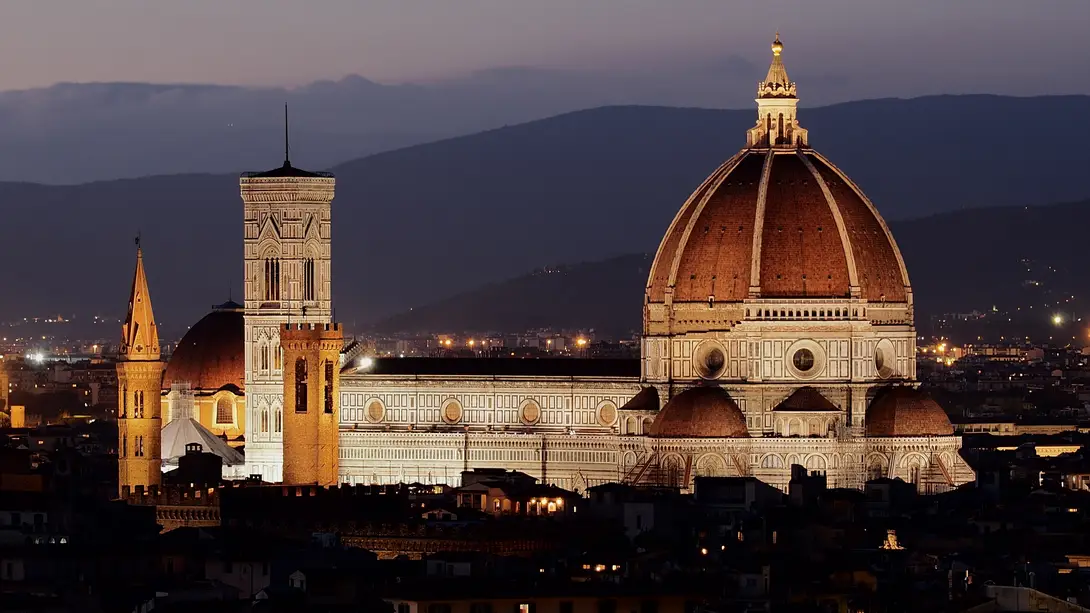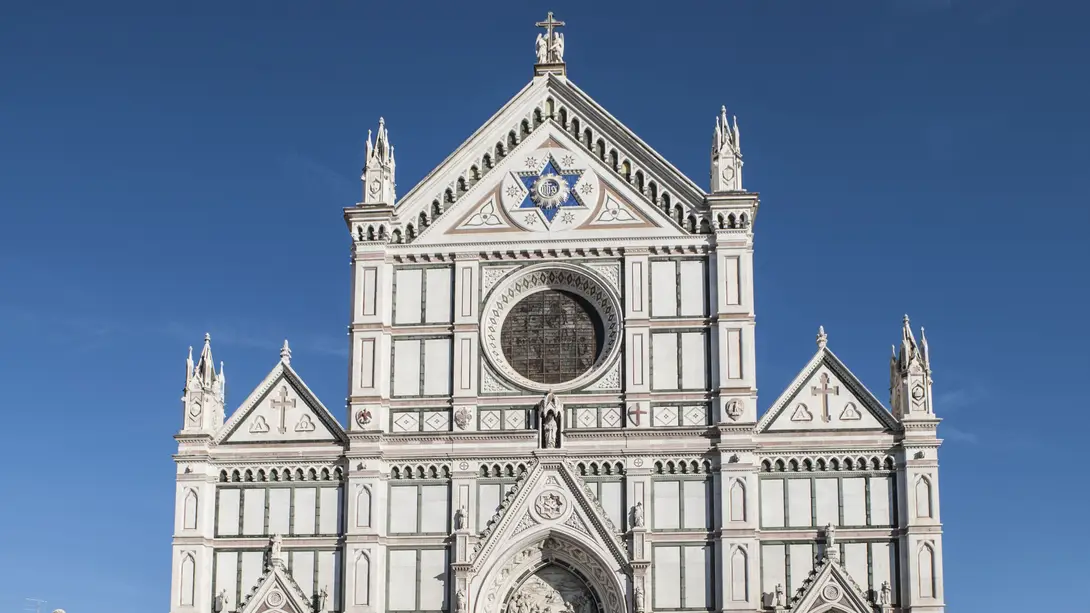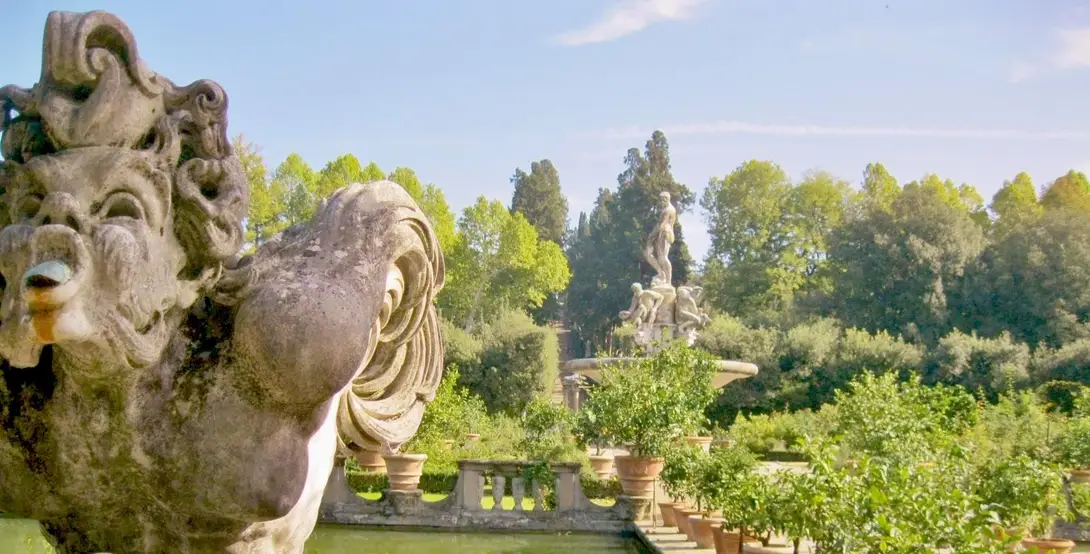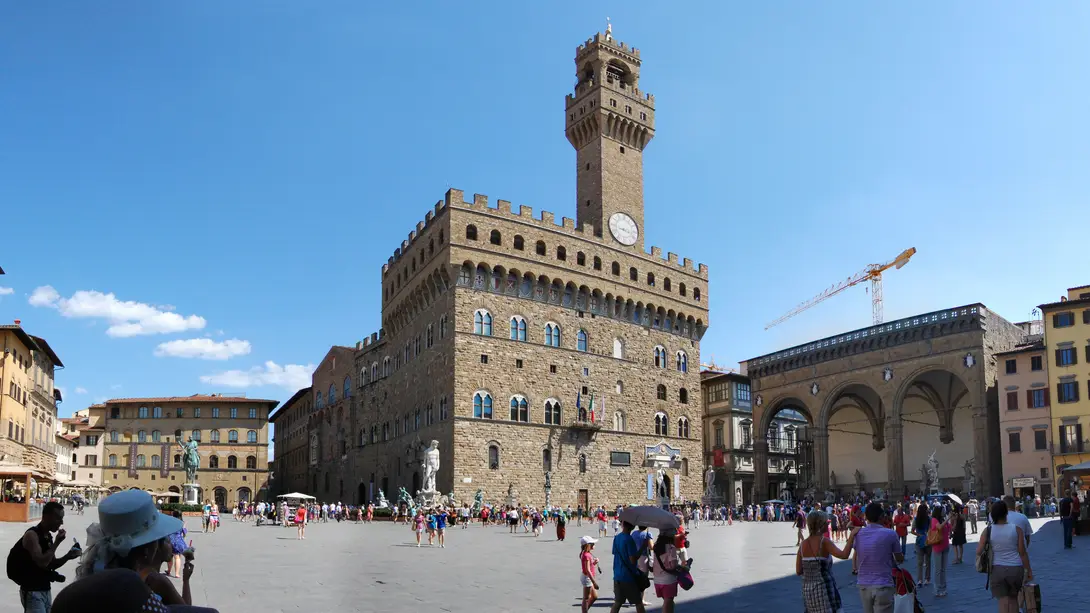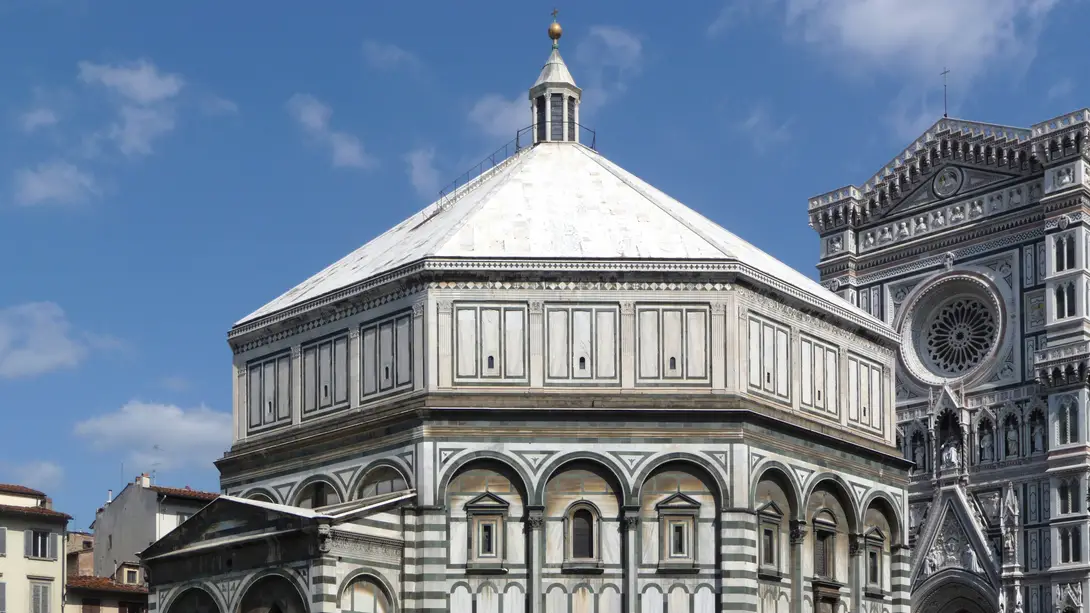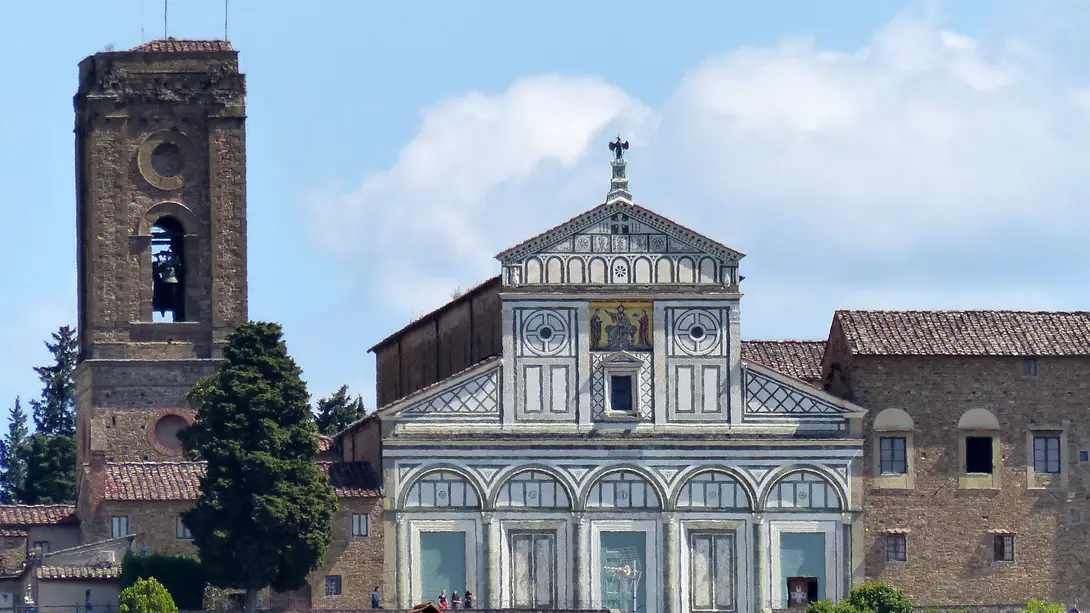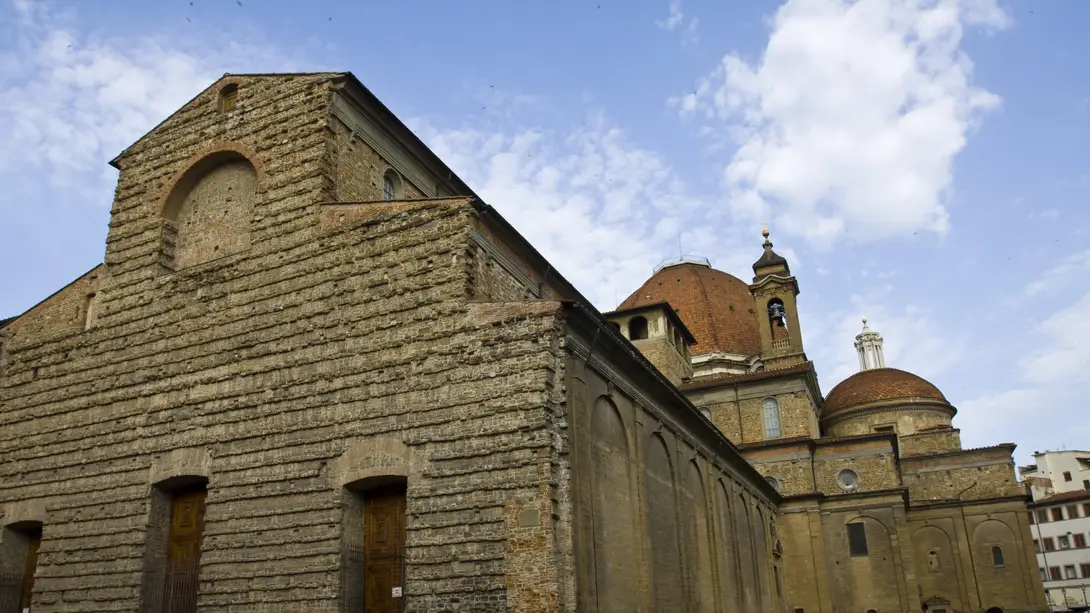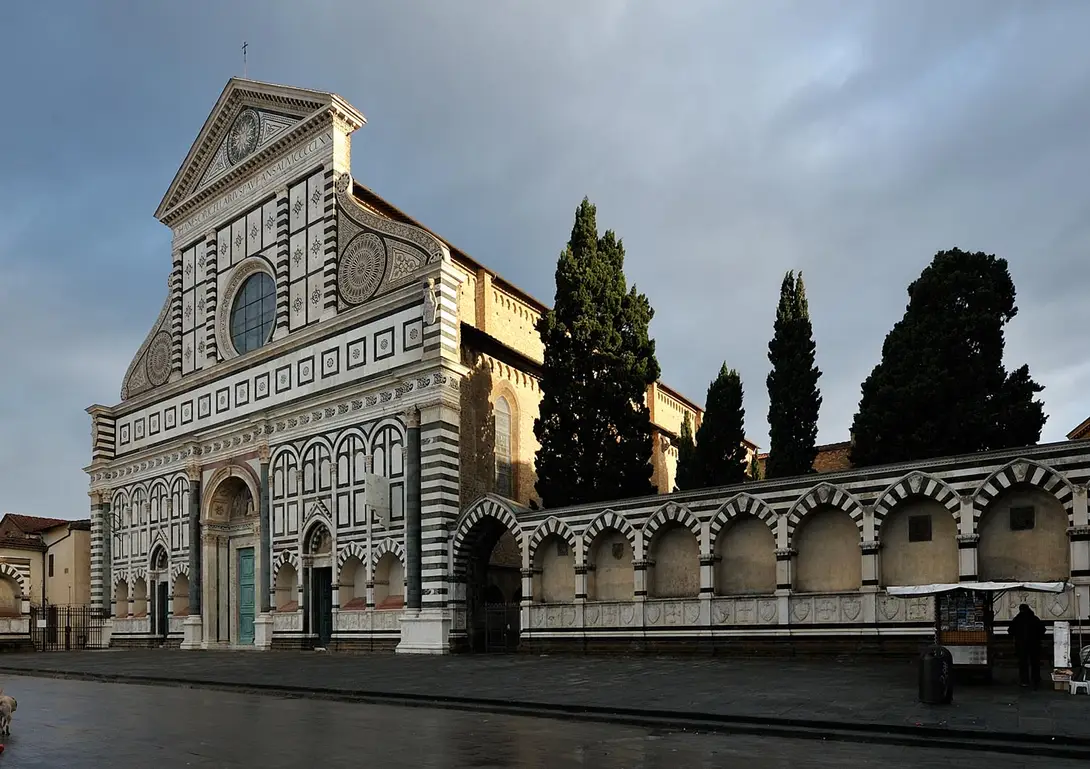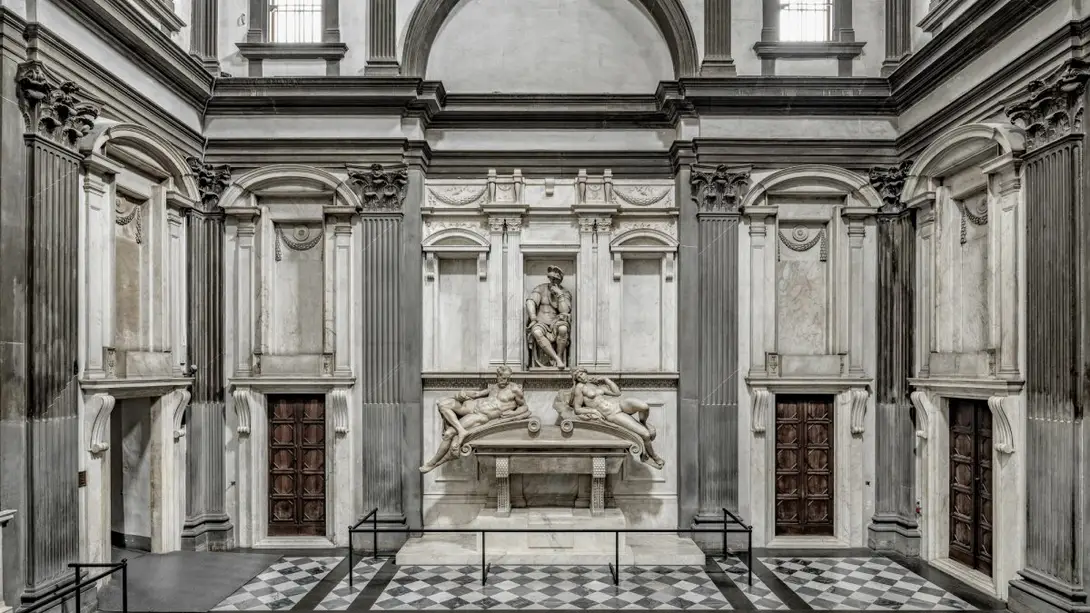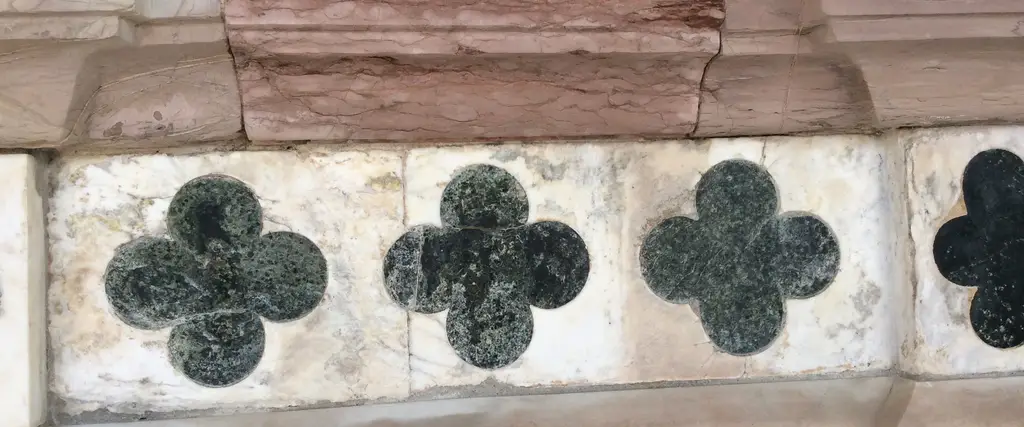
Find out what the monuments of Florence are made of
“Florence RockinArt” is a web-app created to deepen the knowledge on the natural and artificial stone materials of which the monuments of Florence are made up. The web-app, in addition to brief historical and architectural notes, presents a detailed description of the geological and mineralogical characteristics of the stones that, with their colors, characterize Florence: the warm ocher color of the medieval Pietraforte, the gray of the Pietra Serena of the Renaissance architecture; and furthermore: the white of the Marbles, the red of the Limestones and the green of the Serpentinites.
Following the colors of the stones of Florence means looking at the city with new eyes and from a different and more attentive perspective. This is a new itinerary, between styles and materials, through the centuries: from the Romanesque of San Miniato al Monte to the Gothic of Santa Croce, from the extravagant Mannerism of the Fountain of Neptune and the Boboli Gardens to the Baroque of the Complex of San Firenze and the Church of San Michele and San Gaetano and the works of the great Italian architects of the twentieth century.
Florence RockinArt APP is also in English and can be consulted online or downloaded (free of charge) on the mobile phone from the following address: https://www.florence-rockinart.it/en/home/. See below some of the stages!
Les lieux
Étapes
Cathedral of Santa Maria del Fiore
Florence Cathedral was designed at the end of the 13th century by Arnolfo di Cambio and is dedicated to Santa Maria del Fiore, a reference to the lily, the city's symbol.
The third largest cathedral of the world (after Saint Peter's in Rome and Saint Paul's in London), at the time of its consecretation in 1436 it was the largest in Europe. The building was erected on top of the earlier Cathedral of Santa Reparata, the remains of which are accessible via the nave.
The exterior, now clad in polychrome marble, remained incomplete for a long time; the original façade, which had been partially built to the design by Arnolfo di Cambio, was demolished at the end of the 16th century, and the current one was only erected at the end of the 19th century.
Inside, the nave and two side aisles end in a vast choir where the main altar stands, surrounded by the tribune on which the Cupola rests. On the left wall are frescoes depicting two condottieri, Sir John Hawkwood (otherwise known as Giovanni Acuto) by Paolo Uccello, who also did the fresco decoration on the clock on the interior façade, and Niccolò da Tolentino by Andrea del Castagno. The 44 stained-glass windows were the work of leading 15th-century masters, including Donatello, Andrea del Castagno and Paolo Uccello.
On the occasion of the Jubilee 2025, Florence Cathedral is a Jubilee Church.
Basilica di Santa Croce
Designed by Arnolfo di Cambio (1296), it is the largest Franciscan church in the world; it is also known as the "Pantheon of Italian glories" for its illustrious tombs (Michelangelo, Galileo, Machiavelli, Rossini, Foscolo, Alfieri) that it preserves in the suggestive Gothic interior.
Among the more than 200 tombs, the two Renaissance monuments stand out, masterpieces of Rossellino and Desiderio da Settignano.
Of the numerous chapels in the transept, frescoed in the fourteenth century, authentic masterpieces are the Bardi and Peruzzi chapels, frescoed by Giotto; remarkable are also the works of Donatello (the Annunciation and the Crucifix). The famous Crucifix of Cimabue damaged by the 1966 flood, instead, is displayed in the sacristy. The museum itinerary includes the Cappella dei Pazzi, by Brunelleschi, the two cloisters and the Last Supper, frescoed by Taddeo Gaddi, a treasure chest of numerous works of art (Donatello, Orcagna, Domenico Veneziano).
Boboli Gardens
The Medici family was the first to take care of the Boboli garden’s arrangement, creating the model of the Italian-style garden, then an example for many European courts, in which a rational order is given to the vegetation and the geometries of the avenues and plants are embellished with grottoes, statues and fountains.
Opened to the public in 1766, it is a real open-air museum: valuable are the Roman statues and those of Renaissance sculptors such as Baccio Bandinelli and Giambologna; the amphitheatre, where court performances took place; the Grotta del Buontalenti, where Michelangelo's Prisons were placed (now replaced by copies).
Piazza della Signoria
The square came into being along with the Palazzo Vecchio between the thirteenth and fourteenth century, establishing itself from the first as an area dedicated to the civic life of the city. Inside the Palace, seat of the Municipality of Florence you can also visit the Archaeological area (remains of the Roman Theatre) and climb the Tower (amazing panorama). In the course of the fourteenth century it took one more or less its present dimensions, as a result of the demolition of numerous private buildings and of two churches, and of the construction of the Loggia della Signoria on the west side and the Tribunale della Mercanzia (Commercial Court, nowadays Gucci Garden) on the north-east. Later developments were mostly connected with the sculptural decorations culminating, during the epoch of the Grand Duke, in the transformation of the Loggia della Signoria into a kind of open-air museum. The construction of the Uffizi (the most visited pianting gallery in Italy) connected with Palazzo Vecchio, in the mid sixteenth-century created a further prospect towards the river. The square was not immune from the nineteenth century renewal of the old city centre, within the course of which various Neo-Renaissance style buildings were introduced.
Piazza della Signoria has always represented the political centre of Florence becoming, over the years, the key place for many events that have strongly affected the history of the City and the entire world. In front of the XVI century Fountain of Neptune , one of the most beatiful fountains of Florence, there is a plaque on the ground marking the exact point where Fra Girolamo Savonarola and his fellow monks were burned on May 23rd 1498. This tragic episode is being commemorated every year with the traditional ceremony of the Fiorita.
In addition to the famous sculptures preserved inside the Loggia dei Lanzi (primarily Benvenuto Cellini's Perseus and Giambologna's Rape of the Sabine Women), among those in front of Palazzo Vecchio we highlight: Michelangelo's David (copy, original in the Galleria dell' Accademia), the Marzocco and Judith and Holofernes by Donatello (copies, originals respectively in the Bargello and inside Palazzo Vecchio). The square is dominated by the equestrian monument of Cosimo I de' Medici, Grand Duke of Tuscany, a work by Giambologna.
San Giovanni Baptistery
Remembered by Dante as “beautiful San Giovanni”, the octagonal-shaped Baptistery isone of the city’s oldest buildings; it acquired its current appearance in the 11th–12th centuries but probably dates as far back as the 5th century. The exterior is clad with green and white marble from Prato with geometric motifs and the dome has eight segments; decorative statues and low reliefs were added in the 16th century.
The three bronze doors are the work of Andrea Pisano (South Doors, c.1330), and Lorenzo Ghiberti (North Doors, 1402–25, and East Doors, 1425–52). The East Doors, decorated with Scenes from the Old Testament, face the Cathedral and were declared by Michelangelo ‘worthy to be the Gates of Paradise’ (the original doors are now in the Museo dell’Opera del Duomo and have been replaced with copies).
The tessellated marble floor inside dates to the end of the12th century, while the gold-ground mosaics on the walls and cupola were executed between 1266 and the beginning of the following century by Venetian and Tuscan craftsmen. The Baptistery also houses the Tomb of Anti-Pope John XXIII, attributed to Donatello and Michelozzo and carved in the first half of the 15th century.
Basilica di San Miniato al Monte
San Miniato al Monte, founded in 1018, is one of the most extraordinary exemples of Romanesque architecture in Tuscany, and stands on the top of a hill overlooking the city, offering a great panorama. The green and white marble facade itnroduces to the interior, which has a mystical atmosphere: the ancient crypt, the inlaid floors of the Basilica and the imposing mosaic in the apse depicting Christ (both 13th century); the Chapel of the Cardinal of Portugal is a Renaissance masterpiece.
Basilica di San Lorenzo
One of the most important Florentine Renaissance building bound up with the history of the Medici family. The basilica consacreted by Saint Ambrose in 393 and rebuilt in a Romanesque form in the 11th century, was enlarged in 1418 by Filippo Brunelleschi to a commission by Giovanni dei Medici. The church is one of the finest expressions of Renaissance architecture and art.
Basilica di Santo Spirito
The Augustinian complex of Santo Spirito of one of the great religious and artistic monuments of 15th century Florence.
The basilica was designed by Brunelleschi and begun in 1444, but was still incomplete when he died two years later. Leonardo da Vinci and Michelangelo loved this church very much and Bernini defined it as the most beautiful church in the world. It houses various artworks: among them a Virgin with child and saints by Filippino Lippi; a special pathway is also open to the visit: it includes the Cloister of Parigi, the Refectory with the fresco of the Last Supper and the Sacristy where people can admire young Michelangelo's Crucifix.
Basilica di Santa Maria Novella
The Church of Santa Maria Novella was the first of the great Florentine basilicas and the first large-scale Gothic building in the city.
Started by the Dominicans soon after 1240; it was finished in 1357 but was not consecrated until 1420.
In the following centuries it underwent various modifications, in particular the remodelling begun by Giorgio Vasari in 1566 and the 19th-century interventions designed to restore the Gothic appearance of the building.
There are a number of important artworks in the church: Giotto’s Crucifix and a wooden Crucifix by Filippo Brunelleschi, Masaccio’s fresco of the Trinity and two chapels frescoed respectively by Domenico Ghirlandaio and Filippino Lippi. The rich polychrome-marble façade was completed in the second half of the 15th century by Leon Battista Alberti.
The church is closely connected to the Florentine Rucellai family, as can be deduced from the name of Giovanni Rucellai, the munificent financier shown prominently on the façade.
Museum of Medici Chapels
The Museo delle Cappelle Medicee consists of various rooms, all of inestimable value. These include the New Sacristyby Michelangelo, and the sumptuous Chapel of the Princes, pantheon of the Medici Grand Dukes, and the Crypt.
The Museum is accessed through a new entrance, inaugurated in 2023, which leads to the Crypt, where some of the tombs of the Medici sovereigns and their families are located, and where part of the Treasure of San Lorenzo is on display.
Starting in 1604, thanks to Grand Duke Ferdinando I de' Medici the construction of the imposing Chapel of the Princes begun; it was destined to house, in the octagonal room covered with a triumph of inlays of precious and semi-precious stones, the sarcophagi of the grand dukes. This type of decoration (the so-called Commesso di pietre Dure) constitutes one of the most important craft traditions in Florence. Work continued for over two centuries.
The New Sacristy represents the last Florentine Michelangelo's masterpiece, who worked on it from 1521 to 1533, before his final departure for Rome. The great artist was responsible for the overall design of this space, a synthesis of sculpture and architecture. At the foot of the funeral monuments, of Lorenzo Duke of Urbino and Giuliano Duke of Nemours, are the famous allegorical figures of Day and Night, Dusk and Dawn. Unfinished, however, are the tombs of Lorenzo the Magnificent and his brother Giuliano, surmounted by a splendid Madonna and Child, also by Michelangelo.
Below this last room is Michelangelo's Secret Room, where the artist probably took refuge during the Republican era, leaving some drawings on the walls. This space, not included in the canonical museum tour, can only be visited by appointment.
Loggia del Bigallo
This gothic style building is a valuable heritage in the history of Florence, not only because of the first image of Florence in the fresco exhibited inside, but also because two important charity institutions, Misericordia and Bigallo, were based right there.
Temporarily closed for renovation.
